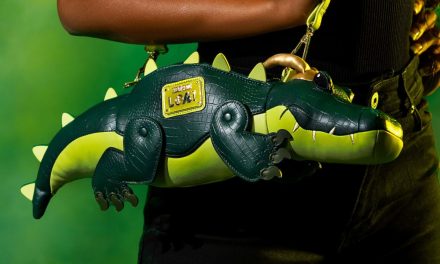Mahlon Todd Williams interview continued…
THS: Do you have a lot of trial and error moments when it comes to effects on set?
Mahlon: There’s a little bit. We have great teams of people doing stuff, and I always try and push the limit as far as we can. Just try and ask for something that is going to work to tell the story, and also something that’s fun for us. Nobody really sees that side of it when they watch the show, but that’s fine because they shouldn’t. But for the crew, when you can do a cool shot and people see the end result without even thinking about how it’s done, that is probably more of a compliment than anything. That we’ve solved a bunch of issues and created something that tells the story that we need to tell.
THS: What is the process like for you of coming up with cool shots?
Mahlon: A lot of it has to do with the script. That is generally our guide, and then a lot of times, each episode this season in particular seems to be based on some kind of genre. So we go back and look at some references of movies from that time period or that genre, whether it’s a horror movie or a puppet movie or documentaries on the punk scene in England. What sort of limitations did the documentary filmmakers have? They had to use practical lighting on location and sometimes it was underlit or the lights were in weird positions so it gave people certain look. So we tried to duplicate that. Every episode I get to be creative and add some of the technical side of things.
But that’s also in conjunction with the directors that come onboard too. Like, I usually want to sit down and talk, listen to them first and find out where they’re coming from and how they want to attack the script. I may have 10 ideas, but from talking to the director, seven of them don’t quite work for what their vision is. Then we’ll pitch three ideas, but the script is usually changing a little bit while we’re in prep.

Mahlon Continues…
Mahlon: Sometimes something on day one seems like a good idea, but by day two or three, the script’s changed so much that it just doesn’t work and you have to come up with another idea. And a lot of times, even the night before, things happen. The weather’s bad, so we have to move something from outside to the inside. You may have been planning the whole prep to do something and you just have to let it go and come up with something new that works for the amount of time you’ve got. You just have to be open to getting into that flow when it comes to working on the production.
THS: Given that directors come in only once or maybe twice a season, are you or your fellow DP Dave ever in the position of guiding them in terms of shot progression or character development?
Mahlon: If it’s somebody’s first go-round, there’ll be a lot of questions about the characters and what’s happened with them. Or we’ll go through prep and walk around the sets, talk about the scenes that we need to shoot and sometimes discuss other scenarios that we’ve already shot, so we’re not doing the exact same thing.
The mandate a lot of times on our show is to keep the camera moving and do bigger shots and not set up stuff where the editor has to cut back and forth between characters. So we’ll do steadicam shots down hallways, and a lot of times on other shows, you can’t do that. That’s not the style of their show, but Legends of Tomorrow tends to be a bit more feature cinematic where the mandate is to try bigger movements. There is a lot more freedom on the show to be able to go crazy with it, and that is what everybody down south is open to.


![Moon Knight – Your New Favorite Marvel Series [Review]](https://thathashtagshow.com/wp-content/uploads/2022/03/275636085_5016271541764239_8343113183783269037_n-440x264.png)

